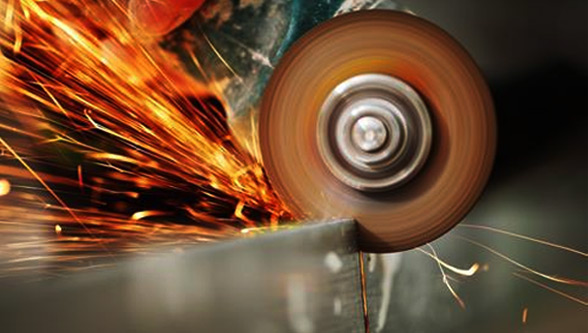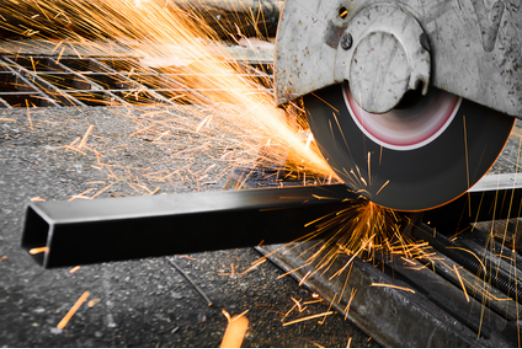If you are working on a project that involves metal framing, you will need to know how to cut metal studs. Cutting metal studs can be challenging, especially if you are not familiar with the process. However, with the right tools and techniques, cutting metal studs can be a quick and easy task. In this article, we will discuss how to cut metal studs .
What Can You Use To Cut Metal Studs?
To cut metal studs, you will need a few basic tools, including a cut off wheel. A cut off wheel is a type of abrasive cutting tool that is used to cut through metal quickly and efficiently. When selecting a cut off wheel, you should look for one metal cut off wheel. The wheel should be made from a high-quality material, such as aluminum oxide or silicon carbide, and should be the appropriate size for your project.
In addition to a cut off wheel, you will also need a few other tools, including safety glasses, a dust mask, and a pair of work gloves. Metal shavings can be sharp and dangerous, so it is important to protect your eyes, lungs, and hands while cutting metal studs.
How to Cut Metal Studs
Cutting metal studs can be a relatively simple process if you follow these steps:
Step 1: Measure and Mark
Before you begin cutting, you will need to measure and mark the metal stud where you want to make the cut. Use a straight edge and a pencil to make a clear line where you want to cut the stud. This will help you to ensure that your cut is accurate and precise.
Step 2: Secure the Stud
Next, you will need to secure the metal stud in place. Use clamps or vise grips to hold the stud firmly in place so that it does not move while you are cutting.
Step 3: Put on Safety Gear
Before you start cutting, it is important to put on your safety gear. This includes safety glasses, a dust mask, and work gloves. Metal shavings can be sharp and dangerous, so it is important to protect yourself while you work.
Step 4: Cut the Stud
To cut the metal stud, you will need to use a cut off wheel. Attach cut off wheel to angle grinder, making sure that it is securely fastened. Turn on the grinder and slowly lower the cut off wheel onto the metal stud, following the line that you marked earlier. Apply firm and steady pressure as you cut through the metal. Be sure to keep your hands and body out of the way of the spinning wheel.
Step 5: Smooth the Cut
After you have made the cut, use a metal file or sandpaper to smooth any rough edges. This will help to prevent injuries and ensure a professional-looking finish.
Tips for Cutting Metal Studs
Cutting metal studs can be challenging, especially if you are not familiar with the process. Here are a few tips to help you cut metal studs more efficiently:
- Use the right tool– A cut off wheel is the best tool for cutting metal studs. Make sure that you choose a high-quality wheel that is specifically designed for cutting metal.
- Secure the stud– To ensure that your cut is accurate, it is important to secure the metal stud in place before you begin cutting. Use clamps or vise grips to hold the stud firmly in place.
- Take your time– Cutting metal studs can be a time-consuming process, but it is important to take your time to ensure that your cuts are accurate and precise. Rushing can result in mistakes and injuries.
- Wear safety gear– Always wear safety glasses, a dust mask, and work gloves while cutting metal studs. Metal shavings can be sharp and dangerous, so it is important to protect yourself.
- Smooth the cut– After you have made the cut, use a metal file or sandpaper to smooth any rough edges. This will not only help to prevent injuries but also ensure that the cut is clean and professional-looking.
- Avoid overheating– When cutting metal studs with a cut off wheel, it is important to avoid overheating the metal. Overheating can cause the metal to warp or melt, resulting in a poor-quality cut. To prevent overheating, make sure that you use a steady and consistent pressure while cutting, and take breaks if necessary to allow the metal to cool down.
- Cut in sections– If you are cutting a large piece of metal stud, it may be more efficient to cut it in sections rather than trying to cut it all at once. This will allow you to maintain better control over the cut and produce a more accurate result.
- Practice on scrap pieces– If you are new to cutting metal studs, it may be helpful to practice on some scrap pieces of metal first. This will allow you to get a feel for the process and develop your skills before working on your actual project.
Conclusion
Cutting metal studs can be a challenging task, but with the right tools and techniques, it can be a quick and easy process. By following the steps outlined in this article and taking the necessary safety precautions, you can ensure that your cuts are accurate and precise, and that your project is a success. Remember to always use a high-quality cut off wheel, secure the metal stud in place, wear safety gear, and take your time to produce a clean and professional-looking cut.



